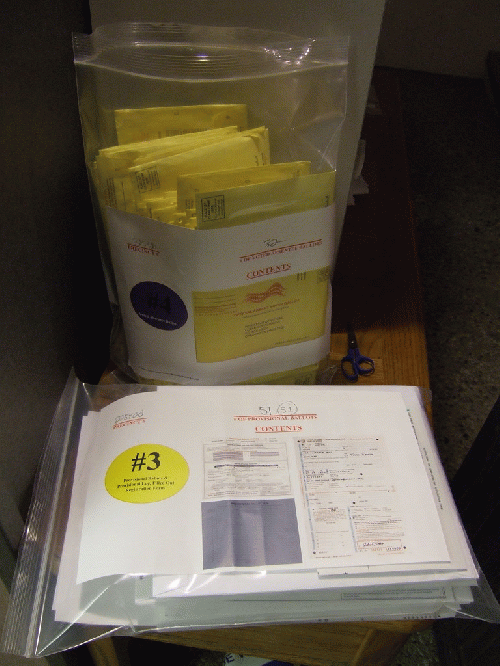From Voting Booth
Two countervailing forces are competing to determine the outcome of the 2020 elections' highest-stakes contests before the close of voting on November 3.
President Trump and his Republican allies are pursuing a full-court press where their success hinges less on winning popular vote majorities and more on disqualifying volumes of absentee ballots via lawsuits to be filed after Election Day -- if preliminary results in a few key states are close. The Democratic Party and their allies, meanwhile, have been pushing their party's more highly motivated voter base to continue their turnout lead seen in early and absentee voting, so Republicans cannot gain traction when they turn to the courts to disqualify late-arriving absentee ballots, or cite other technicalities to disqualify votes.
"We are targeting 8.8 million students, faculty and staff in universities in Alabama, Arizona, Florida, Georgia, Mississippi, North Carolina, South Carolina and Texas. We have state-specific ads for every one of our campaigns," said Andrea Miller, executive director of People Demanding Action, which has been turning out voters in communities of color. "And then we are also advertising our election protection tool, 'See Something, Say Something' We have done outreach to nearly 20 million people and the election isn't over."
Whether or not the apparent enthusiasm gap continues through Election Day -- or shifts via what the Republicans hope will be a large in-person turnout on November 3 -- is an open question. However, the Trump campaign and its allies are not counting on popular vote victories to secure a winning margin among state Electoral College delegations. Their litigation strategy arguably has been the Republican Party's most overt voter suppression effort in years -- building on Trump's ongoing and baseless attacks on the legitimacy of absentee balloting.
The voting wars are legal fights over technicalities in processes that can end up disqualifying -- or empowering -- blocs of voters to tilt close-margin contests. The 2020 election has seen more litigation over these technicalities, especially surrounding the use of mailed-out (or absentee) ballots, than any recent presidential election. While Democrats secured many early victories, especially in state and federal district courts, Republicans in recent days have won notable decisions -- and legal arguments -- in the Supreme Court and federal appeals court.
There's a common thread running through these decisions that appears to give Republicans an opening to initiate post-Election Day litigation. In rulings affecting Wisconsin, Pennsylvania, North Carolina and Minnesota, conservatives have highlighted a way to disqualify what may become thousands of absentee ballots that were properly mailed and postmarked (by Election Day), but are received by election officials days later via mail delivery.
Various judges -- including a likely Supreme Court majority among the high court's conservatives without Chief Justice John Roberts -- have said that only state legislatures have the authority to regulate elections with federal candidates. That construction is based on the U.S. Constitution, whose opening articles delegate no power to state supreme courts, state constitutions, secretaries of state or statewide election boards to run elections. These non-legislative actors took steps this year to issue regulations to assist voters and election officials in response to COVID-19.
Thus, in Wisconsin, the Supreme Court said absentee ballots that were not received by November 3 would not be counted -- because the state's (Republican majority) legislature did not extend the deadline. Justice Brett Kavanaugh also commented that election results should be known by election night, which mirrors Trump's rhetoric but does not reflect the reality of states like Wisconsin where local clerks will only start processing 1.1 million ballots that morning.
In Pennsylvania and North Carolina, the Supreme Court said one week before Election Day that it was too late to overturn ballot-return deadlines that went past Tuesday. (In Pennsylvania, it's Friday, November 6. In North Carolina, it's Thursday, November 12.) While much national press coverage said those two rulings were Democratic victories, those assessments glossed over statements, concurrences and dissents from four conservative justices that basically said that ballots arriving after Election Day could be disqualified if a legislature didn't extend the return deadline. Newly seated Justice Amy Coney Barrett didn't participate in those cases.
In response, Pennsylvania's attorney general told the Supreme Court that the secretary of state was directing all county election officials to "segregate" all absentee ballots arriving after November 3 and through the November 6 deadline. Election law experts said that Pennsylvania's move would insulate absentee ballots arriving earlier from challenges -- because late-arriving ballots would not be mixed in with those earlier batches of ballots when counted.
North Carolina's state election board is not following Pennsylvania's leadas a precautionary measure. It issued a statement urging all voters to return absentee ballots as soon as possible, but said the final deadline was on November 12.
A day after the Supreme Court ruling in the Pennsylvania and North Carolina suits, a federal appeals court in Minnesota threw out its week-long absentee ballot-return deadline extension -- issued this summer by the secretary of state as part of a legal settlement with Republicans.
"The Secretary and his respective agents" are ordered to identify, segregate, and otherwise maintain and preserve all absentee ballots," the Eighth Circuit Court's decision said, "in a manner that would allow for their respective votes [for president and vice president]... to be removed from vote totals in the event a final order is entered by a court."
(Note: You can view every article as one long page if you sign up as an Advocate Member, or higher).






